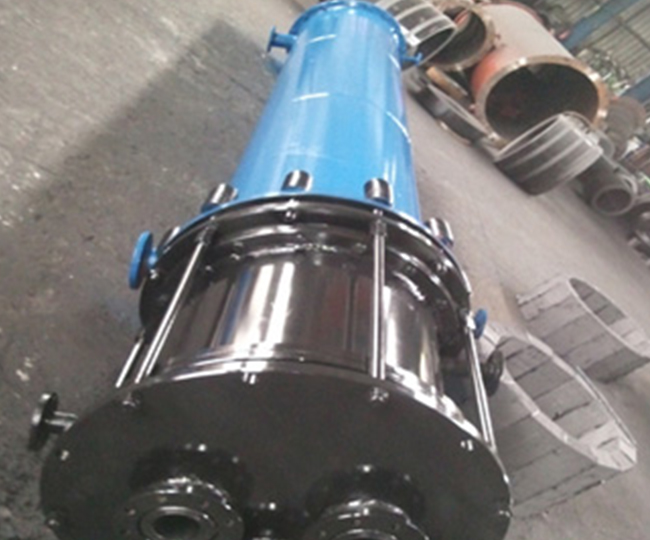Graphite heat exchanger is a kind of heat exchanger which is widely used in industry. It has many advantages that similar products can not compare with, but it also has some defects, but it still has some defects.
First, let's talk about structure. Graphite heat exchanger has good acid corrosion resistance and good thermal conductivity. During preparation, the graphite core is made into a vertical and horizontal block hole structure separated from each other. If two mediums pass through each other, the high-temperature medium will continuously transfer the heat source to the graphite heat exchanger, while the low-temperature medium will also get heat, so as to achieve the purpose of heat source conversion. Generally speaking, the graphite used to make heat exchanger has a certain degree of impermeability, which can be divided into block hole type, tube shell type and plate type according to the structure.

Graphite heat exchanger can be used in places where the medium is weak acid, alkali, organic acid and other corrosive substances, and its thermal conductivity coefficient is far higher than that of many metal materials, which can be said to be second only to copper and aluminum. It is twice larger than carbon steel and five times larger than stainless steel. Various heat exchange equipment can be made. And it is extremely resistant to high temperature, the surface is not easy to form dirt, will not cause environmental pollution, and the weight is relatively light.
But graphite heat exchanger is not all advantages, it also has some defects. For example, once the block hole heat exchanger leaks, it is very difficult to find and repair it. The disadvantage of shell and tube heat exchanger is that its strength is relatively low. If steam pressure is used, it should not exceed 0.15.
In general, although the graphite heat exchanger has both advantages and disadvantages, its application advantages far outweigh its disadvantages in the current industrial applications.




